Gauff vs Świątek: United Cup Final Analysis
Coco’s new forehand, dynamic tennis, elite returning, second serves
Gauff def. Świątek 6-4, 6-4.
Coco Gauff sent a warning message to the rest of the WTA tour on Sunday night, defeating Iga Świątek in straight sets. While their head-to-head remains lopsided, Gauff has now won the last two matches without dropping a set. Gauff finished the United Cup undefeated with a 5-0 record and has firmly positioned herself as a contender for this year’s Australian Open.
Let’s get into the analysis.
Gauff’s forehand improvements
Gauff has made some important improvements to her forehand since appointing Matt Daly as her coach in September 2024.
Two things really stood out to me on Sunday: Gauff appears to have a shorter, more compact backswing than in the past; and she is hitting her forehand with more variety, in terms of both spin and height.
Technical changes
One of the big problems with Gauff’s forehand has been her inefficient swing path. Gauff’s forehand motion has generally featured a long, exaggerated backswing. This has posed a few issues for Coco, particularly against heavier ball strikers and when the ball is hit with depth, as her forehand becomes rushed due to the longer preparation time. Further to this point, the longer backswing can also result in inconsistent contact points with the ball.
Here is an example of Gauff’s forehand at the WTA Finals in 2022:
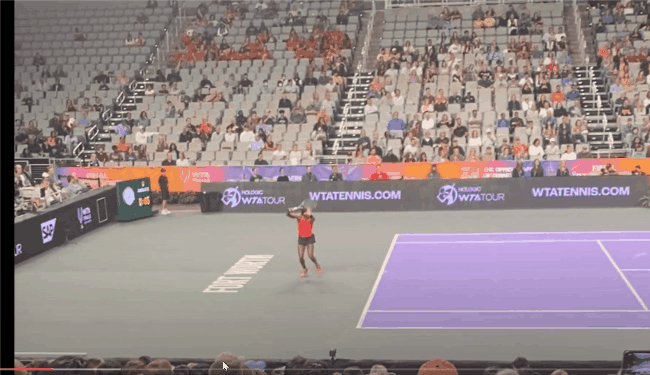
However, over the last few months, Gauff has truncated her backswing, making her swing path more efficient. The shorter backswing has also resulted in a more compact, controlled follow-through. The example below was taken during the US Open last year:

Here’s a look at a different angle from Sunday’s match – the shorter backswing is evident, alongside the snappier follow-through:
Short note on grip change: I’m nowhere near an expert in analysing grip changes. Tennis Inside Numbers pointed out that Gauff may have also altered her grip so that she can hit the ball with a slightly more open face. Happy to hear thoughts in the comments!
Tactical changes
Alongside the technical tweaks to Gauff’s forehand, there has also been some tactical adjustments – she looked to vary her pace and trajectory of her forehand shots against Świątek on Sunday.
There were several instances of Gauff hitting forehands with greater topspin and greater height, aiming to disrupt the rhythm of Świątek’s groundstrokes and altering the pace of the rally. Some examples below:

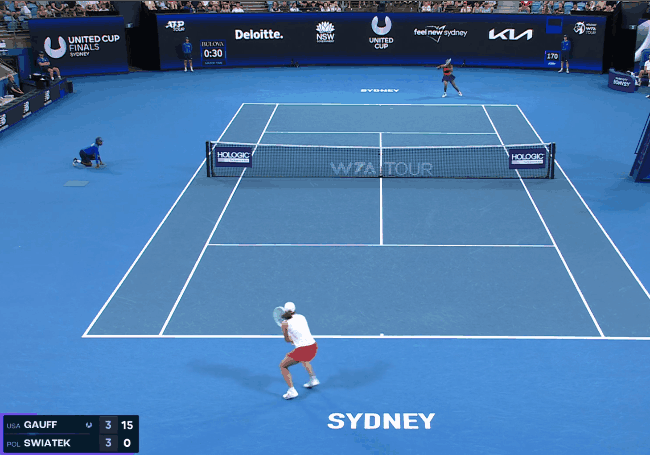
Have these changes had an effect?
Although it’s too early to reach a definitive conclusion, it appears that Gauff’s forehand performance is improving as a result of these forehand tweaks. There’s also a good range of recent matches between Gauff and Świątek on hard courts to make some reasonable comparisons.
On Sunday, Gauff hit 11 forehand winners (8 groundstroke winners + 3 net winners) and 11 forehand unforced errors.1 Gauff’s 1:1 ratio of forehand winners to forehand unforced errors represents her best forehand performance against Świątek when playing on hard courts, by some margin:

Dynamic tennis
Now, more focus on the match. The quality of the rallies played were sensational at times. Gauff and Świątek are in the top echelons of the tour in both court movement and athleticism, and the match showcased these capabilities to their full extent.
The rally below – one of the best in the match – highlights how sublime Gauff’s defence is, managing to get back three extremely tough balls back into play, with one of them being a sensational defensive lob. It also highlights Świątek’s rapidity, as she tracks back and recovers from the lob with great composure.

An example of pure athleticism below from Gauff – she gets a fortuitous net cord to keep her in the rally in the first place, Świątek follows it up with a cross-court approach that is sliding away from Gauff. Most would think the point is lost by now. Not Coco. Gauff leverages her phenomenal lateral movement to not only reach the ball, but hit an unreal passing shot that Świątek can’t do anything about.
The level of tennis on display can maybe best be summed up by the rally on the second point of the match. Yes, the second point.
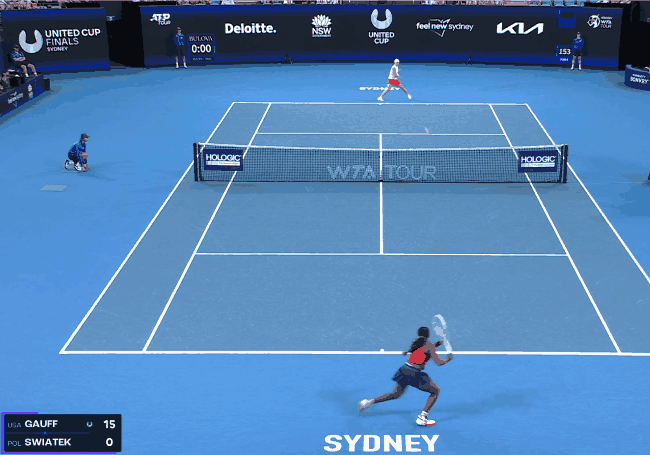
Second serve returning
Outside of those brilliant rallies, both Świątek and Gauff’s return of serve stood out. Gauff and Świątek are both exceptional returners – they were the top two returners on the WTA tour last year. In fact, in 2024, Gauff and Świątek generated the most break point opportunities per return game and won the highest percentage of return games.
The chart below shows just how far ahead of the pack they are - the y-axis represents the number of break points earned (‘generated’) per return game; the x-axis represents the percentage of return games won.
Those in the top right corner earn more break points per return game than average and win a greater percentage of return games (i.e., convert their break points) than average:
Both players showed off their considerable returning prowess on Sunday, particularly on second serves. Świątek was quick to capitalise on anything short from the Gauff second serve, not afraid to step inside the baseline and to hit returns with interest, like below:
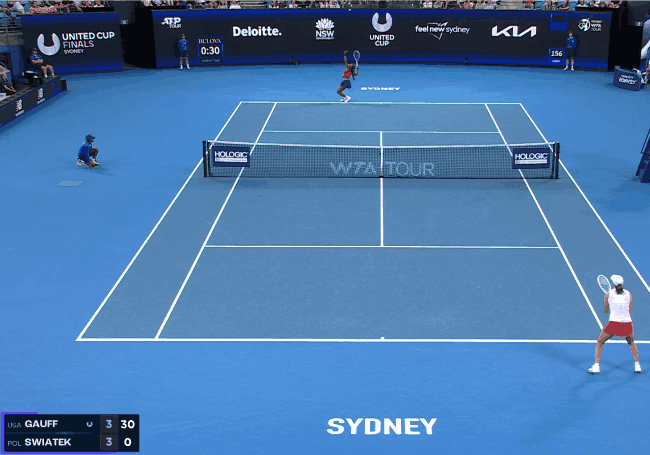
Gauff often ran around on to her forehand wing, managing to club several fast and deep returns back to Świątek. Maybe none were so important in the match as this one at set point in the first set:
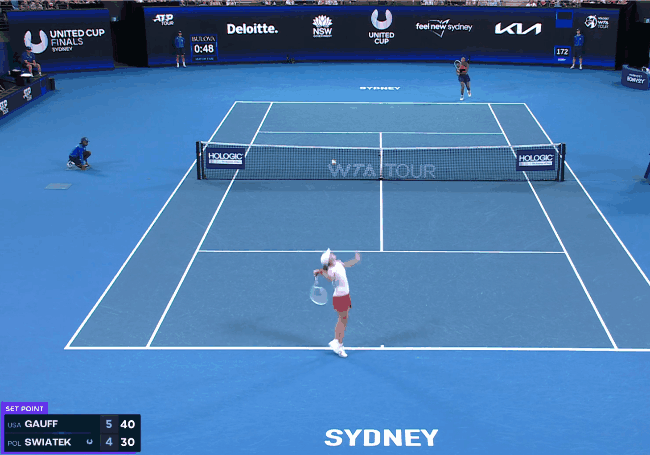
Short thoughts on double faults
Gauff’s second serve woes have been well-documented over her career. In 2024, she served an average of 6.1 double faults per match, which ranked third on tour last year – a rate which will clearly not be sustainable in the long-term:
However, on Sunday, she served only 4 double faults (one of them did fall on break point at 2-2 in the 2nd set) against the best returner on tour, who is notorious for putting pressure on second serves. Vansh astutely pointed out that Gauff has made changes to her serve grip, which has coincided with more stability on her second serve. Something to monitor over the AO.
Final thoughts
Overall, a fantastic advertisement for women’s tennis. It’s already a phenomenal product, but to see these two battle it out with this sort of intensity and ferocity in a non-major tournament says a lot.
Świątek really wanted to win this for Poland – we saw her passionate reaction after she defeated Rybakina just a day earlier. But Gauff wasn’t to be denied, continuing her rich vein of form. She’s building a really strong case to make a deep run at this year’s Australian Open.
Although the rivalry has been so lopsided, I think the ledger may continue to shift closer and closer to parity over time. That’s not to say that Świątek won’t win her fair share of matches in this head-to-head going forward; just that the gap between these two is narrowing all the time.
There’s a lot more to come from this rivalry. I’m looking forward to seeing what unfolds.
An article for another day, but publicly available data for tennis pales in comparison to other major sports, such as the NBA. Without Tennis Abstract (and all of their wonderful contributors to the Match Charting Project), I’d be in deep trouble. Thanks also to Tennis Inside Numbers for providing valuable match data.




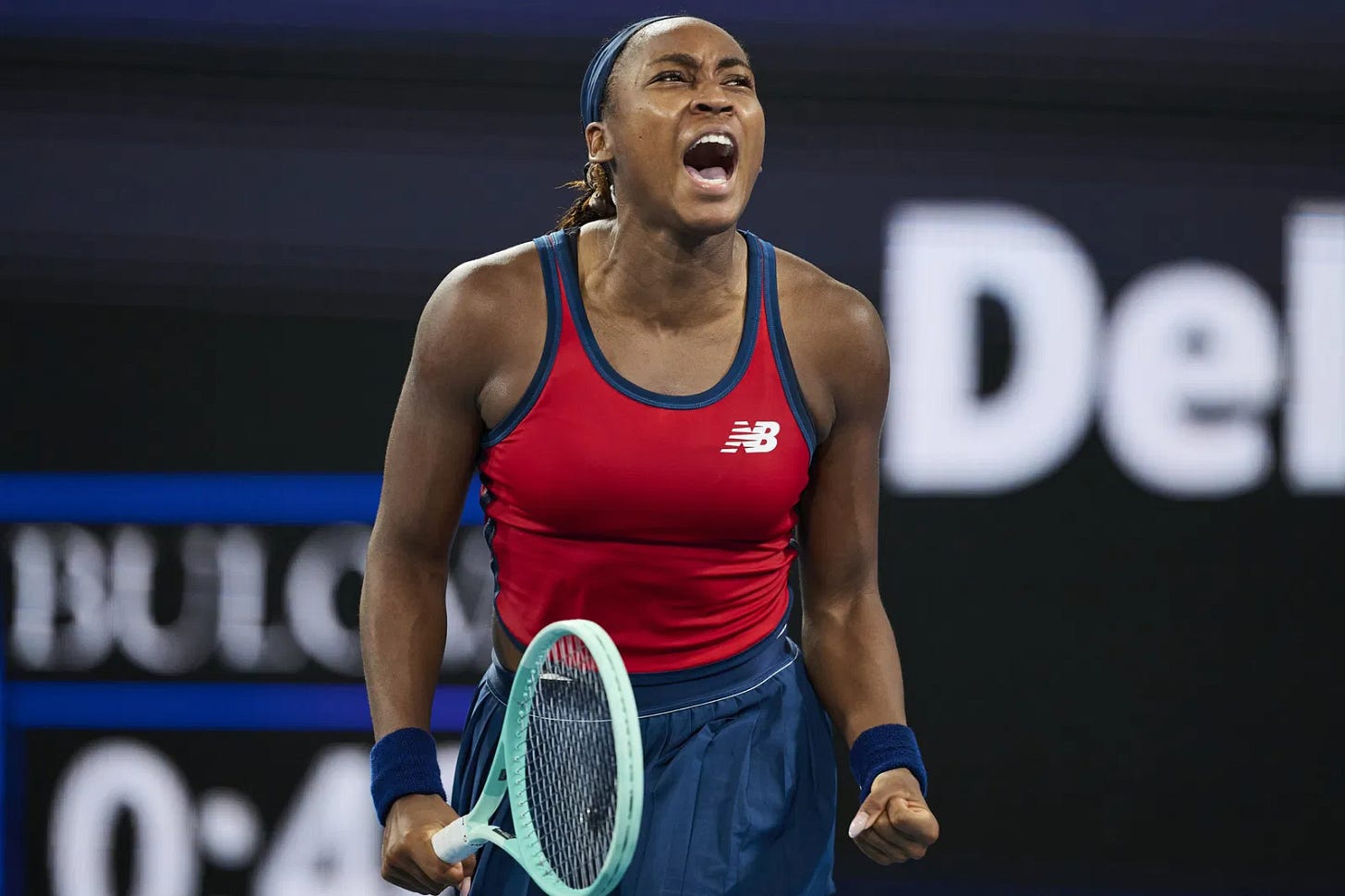
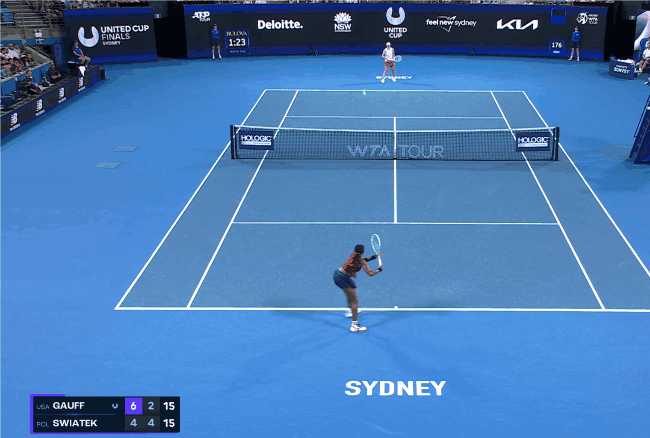
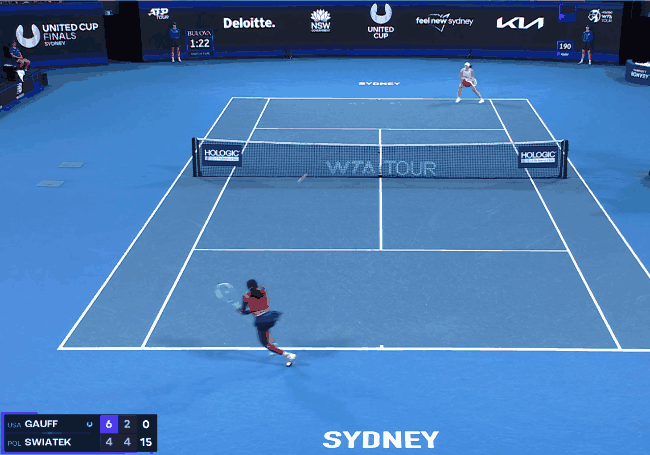


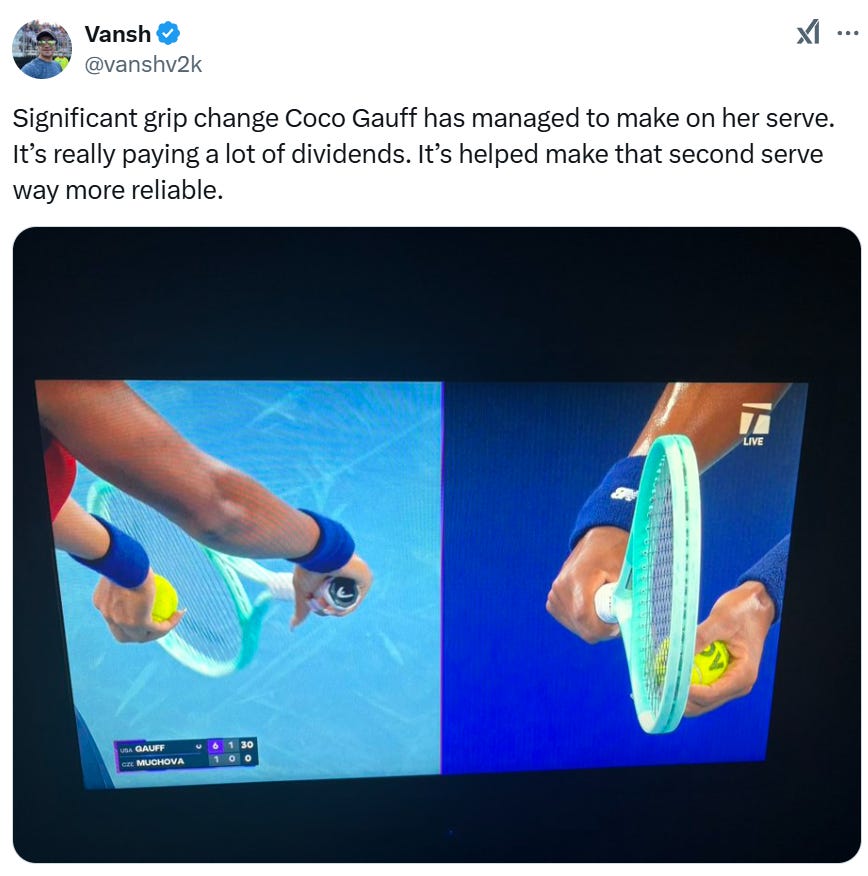
Hi Austen, loved your analysis of the match! Thanks for a great read!
I’m actually a fellow Substacker and can help you with in your quest for (some) match data. These were Gauff’s numbers from the forehand wing:
- 8 groundstroke winners + 3 net winners
- 11 unforced errors (1 return +10 rally groundstrokes)
- 22 total errors
While we don’t operate on such a large scale as Tennis Abstract (an invaluable resource to the tennis community, Jeff Sackmann is fantastic!!!), we post selected match analyses that include a bunch of data. Give it a look!
Great read, really enjoy rally highlights following your analysis of play.